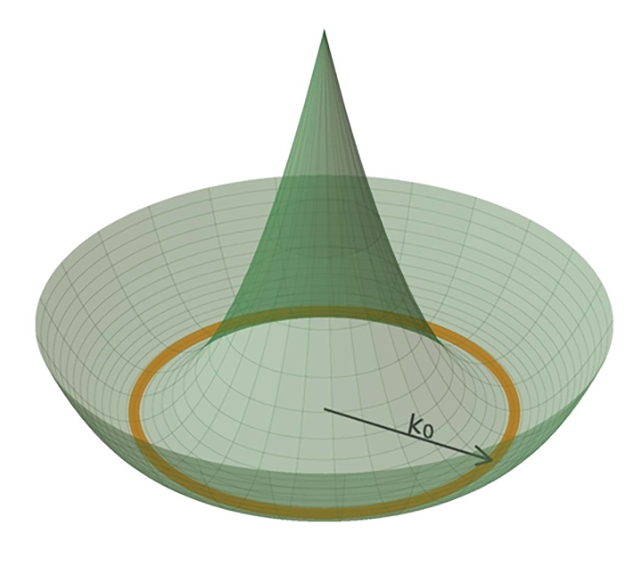You're familiar with the states of matter we encounter daily – such as solid, liquid, and gas – but in more exotic and extreme conditions, new states can appear, and scientists from the US and China found one earlier this year.
They're calling it the chiral bose-liquid state, and as with every new arrangement of particles we discover, it can tell us more about the fabric and the mechanisms of the Universe around us – and in particular, at the super-small quantum scale.
States of matter describe how particles can interact with one another, giving rise to structures and various ways of behaving. Lock atoms in place, and you have a solid. Allow them to flow, you have a liquid or gas. Force charged partnerships apart, you have a plasma.
The quantum landscape provides even stranger ways for particles to interact, allowing for unique behaviors best described in terms of possibility and energy.
Researchers discovered the new state through a frustrated quantum system. In simple terms, it's a system with built-in constraints that prevent particles from interacting as they might typically (hence the frustration).
These constraints – and the resulting frustration – can create exciting results for scientists. Here, the researchers focused on electrons and used the analogy of a party game to explain what's happening.
"It's like a game of musical chairs, designed to frustrate the electrons," said theoretical condensed matter physicist Tigran Sedrakyan from the University of Massachusetts Amherst.
"Instead of each electron having one chair to go to, they must now scramble and have many possibilities in where they sit."
The system researchers put together was a semiconducting device with two layers: a top layer rich in electrons and a bottom layer with many available holes for the electrons to naturally move into. The twist? There aren't enough holes for all the electrons.

Though this kind of system remains difficult to observe, the team used an ultra-strong magnetic field to measure how the electrons moved, revealing the first evidence of the new chiral bose-liquid state.
"On the edge of the semiconductor bilayer, electrons and holes move with the same velocities," said physicist Lingjie Du from Nanjing University in China.
"This leads to helical-like transport, which can be further modulated by external magnetic fields as the electron and hole channels are gradually separated under higher fields."
This new state revealed some rather interesting properties. For instance, electrons will freeze into a predictable pattern and a fixed spin direction at absolute zero and can't be interfered with by other particles or magnetic fields. That stability could have applications in quantum-level digital storage systems.
What's more, outside particles affecting one electron can affect all of the electrons in the system, thanks to relatively long-range quantum entanglement. It's like smashing a cue ball into a pack of billiard balls and all those balls traveling in the same direction in response – another finding that could be useful.
While this all involves very high-level physics, each discovery like this – these quirks and edge cases that happen outside the boundaries of common particle interactions – gets us closer to a complete understanding of our world.
"You find quantum states of matter way out on these fringes, and they are much wilder than the three classical states we encounter in our everyday lives," said Sedrakyan.
The research has been published in Nature.
A version of this article was first published in June 2023.
